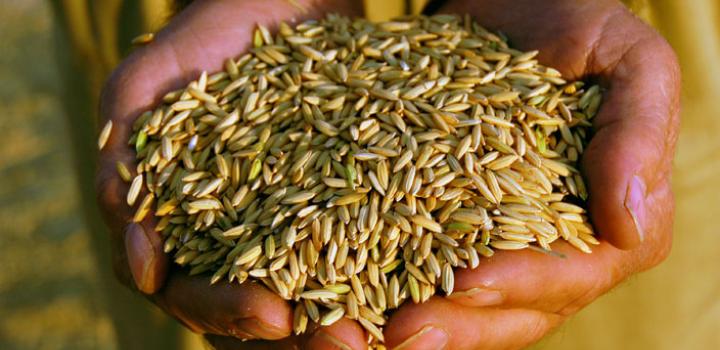Rice rebounds in 2018 after 2017 flooding woes
by April 8, 2019 6:40 pm 424 views

After a brutal 2017 in which spring flooding cost Arkansas growers an estimated $175 million in lost production and damaged acreage, rice growers saw higher production in 2018 than in any of the three previous years, according to an April 4 report from the U.S. Department of Agriculture.
In the report, produced by the USDA’s National Agricultural Statistics Service, rice growers harvested more acres, and yield and production throughout the state were higher. Most of the largest increases in yield, percentagewise, were seen in eastern Arkansas counties that suffered flooding losses most acutely in 2017.
Phillips County, which suffered between $400,000 and $1 million in crop loss in 2017, saw its rice production more than double from 1 million hundredweight to about 2.13 million hundredweight. Increases of similar proportions were reported in Lawrence, St. Francis, Ashley and Desha counties, according to the report.
While the county-by-county acreage estimates provided in the NASS report often differ from estimates provided by the Farm Service Agency, also part of the USDA, the statewide numbers are typically very similar.
Jarrod Hardke, extension rice agronomist for the University of Arkansas System Division of Agriculture, said that while the higher production numbers are welcome, the higher rice acreage in 2018 wasn’t necessarily a surprise, as it followed the natural cycle of shifting acreage, crop rotation and prospective planting in response to relative commodity prices.
Hardke said with the window for much of the state’s planned early planted rice closing for 2019, shifts in acreage are an open question.
“Until a week ago, I’d maintained my expectation that we’ll remain close to flat, at 1.4 million acres of rice,” Hardke said. “But we’ve seen what’s happened with this spring. After a week of dry weather, we saw rains again over the weekend, with more pointed our way. 1.4 million acres is still the target, but if this pattern doesn’t give, we’ll possibly head down toward 1.2 million acres. At this point, we’re staring at a downward trend, but we have a while to go yet before we start losing rice acres.”
